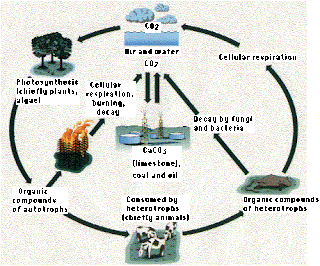The highest sand dune recorded, is in the Sahara Desert at 1410 feet, high
desert biome
Sunday, January 9, 2011
5 things to remember-30°0′0″N 27°5′0″E
1.) There are four types of deserts. There are hot and arid deserts, like the Sonoran Desert in Arizona. Semi-Arid deserts, like the Great Basin in Nevada. Costal deserts, such as the Pacific coast of Baja California. The fourth type of deserts is cold deserts, like Greenland.
2.) One third of the earth's surface is covered by desert.
3.) Sand is the surface of the desert, but most deserts have gravelly bases under the sand surface.
4.) Along the Tropic of Cancer and the Tropic of Capricorn is called the desert belt.
5.) Deserts usually have hot days and cool nights.
2.) One third of the earth's surface is covered by desert.
3.) Sand is the surface of the desert, but most deserts have gravelly bases under the sand surface.
4.) Along the Tropic of Cancer and the Tropic of Capricorn is called the desert belt.
5.) Deserts usually have hot days and cool nights.
Humans influencing the desert-35°03′09″N 118°10′26″W
Many humans use off road vehicles on unrestricted parts of the desert. The tracks of the vehicles can scar the desert for a very long time and strip the desert's topsoil. This makes it hard for plants to grow, and it already takes a long time for vegetation to grow in the desert.
People have used the desert land to graze their cattle which is destroying the little vegetation that grows in the desert.
Another way humans have influenced the desert is by having mines that were to close to the streams of the desert. The mines of silver and gold poisoned the streams which hurt desert plant and animals that drank the water.
If people continue to ride off road vehicles in the desert then it will ruin the land where plants grow and vegetation could not occur. Grazing animals in the desert could also eliminate all the vegetation in the desert since it takes so long for things to grow in the desert. If vegetation gets destroyed then the few organisms that can survive in the desert would not have enough food to survive.
Succession-34°7′34″N 116°24′59″W
Primary Succession- In one desert there was a lot of Cyanophyta, and Scytonema javanicum started to decrease. Then Chlorophyta, Bacillariophyta and Phomidium increased. The biodiversity also increased as succession happened. Biomass of microalgae increased at first but decreased later in succession due to the abundance of lichens and mosses. The community building species was dominant for 42 since succession was so slow. The speed and how succession occurred was affected by water, vegetation coverage, terrain, time and the soil.
Secondary Succession- An example of secondary succession in deserts are desert fires. The Sawtooth fire near Yucca Valley, California burned about 61,600 acres.
Secondary Succession- An example of secondary succession in deserts are desert fires. The Sawtooth fire near Yucca Valley, California burned about 61,600 acres.
Friday, January 7, 2011
Coevolution Mechanisms-25°40′N 100°18′W
There are two types of mimicry coevolution mechanisms, batesian and mullerian mimicry. In batesian mimicry a harmless organism looks like another organism that is very dangerous. In mullerian mimicry a harmful organism resembles and organism that is just as harmful. The picture above is an example of batesian mimicry.
Another coevolution mechanism is camofloage. Camofloage is where an organism blends into its surroundings. An organism that shows this in the desert is the flat-tailed horned lizard.
Aposematic coloration is where an organism uses colors as a warning or other traits that warn other organisms to stay away because they are dangerous. In the picture above a regal ring-necked snake shows aposematic coloration. Regal ring-necked snakes can be found in Northern Mexico.
Another coevolution mechanism is camofloage. Camofloage is where an organism blends into its surroundings. An organism that shows this in the desert is the flat-tailed horned lizard.
Aposematic coloration is where an organism uses colors as a warning or other traits that warn other organisms to stay away because they are dangerous. In the picture above a regal ring-necked snake shows aposematic coloration. Regal ring-necked snakes can be found in Northern Mexico.
Thursday, January 6, 2011
Parastism- 35°03′09″N 118°10′26″W / 35.0525°N 118.17389°W / 35.0525
Parasitism is a relationship where one of the organism benefits and the other organism is harmed. An example of this in the desert biome is a desert mistletoe getting nutrients from a desert willow. Eventually the mistletoe grows so big that it takes all the nutrients from the desert willow and the desert willow dies.
Subscribe to:
Comments (Atom)




